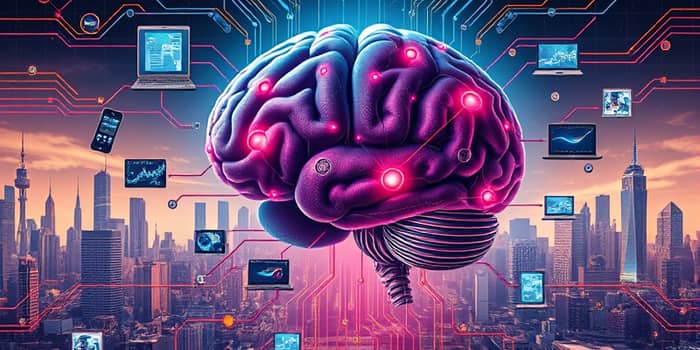
The frontier of neurotechnology presents a compelling journey where science and finance converge. Investors are increasingly drawn to breakthroughs that promise to revolutionize healthcare, entertainment, and daily life. Understanding the intricate landscape of brain-computer interfaces (BCIs) is essential for anyone seeking to ride this wave of innovation.
In 2024, the global brain-computer interface market was valued between USD 2.09 and 2.75 billion. Projections for 2025 anticipate growth to USD 2.83–3.21 billion, with forecasts suggesting the market could soar to USD 8.73 billion by 2033 and even reach USD 12.87 billion by 2034. These numbers imply a robust Compound Annual Growth Rate above 15% through the next decade.
Historical data supports this optimism: the market stood at USD 1.74 billion in 2022 and is expected to climb to USD 6.2 billion by 2030 at a 17.5% CAGR. Such momentum reflects accelerating technological innovation and rising global demand.
North America leads the sector with nearly 40% of market share in 2024, fueled by high R&D spending and advanced medical infrastructure. Meanwhile, the Asia-Pacific region emerges as the fastest-growing market, driven by expanding healthcare investments and a rising prevalence of neurological disorders. Notably, China has surpassed the US in annual BCI research publications since 2019, underscoring its accelerating dominance.
At its core, a brain-computer interface establishes a direct communication pathway between neural activity and external devices. Signals are acquired through various sensors, processed by advanced algorithms, and translated into commands to control computers, prosthetics, or environmental systems.
BCIs fall into two primary categories:
Non-invasive techniques dominate consumer and research markets due to their accessibility, while invasive systems, though costlier, deliver unrivaled precision needed for medical rehabilitation.
The diversity of BCI applications fuels investor excitement. From life-changing medical therapies to immersive entertainment, BCIs are reshaping multiple sectors.
Several factors are propelling the BCI market forward:
Investors are targeting emerging markets, with Asia-Pacific offering high-growth potential. Strategic partnerships and product launches by established medical device firms and agile tech startups highlight an ecosystem ripe for collaboration. Clinical trials are moving forward at a rapid pace, and regulatory approvals are opening doors to wider commercialization.
Despite the promise, BCI technology faces critical challenges. Cybersecurity risks, such as unauthorized access to neural data, raise concerns about privacy and consent. Adversarial attacks could manipulate brain-computer pathways, posing safety threats.
Technical hurdles include achieving consistent, high-fidelity signal interpretation in diverse real-world settings. High costs for implantable devices and complex regulatory requirements can impede adoption. Ethical debates around ownership of neural data, informed consent, and long-term health impacts must be addressed to build public trust.
Recent breakthroughs showcase the field’s rapid evolution. Researchers in the U.S. have decoded rudimentary thoughts using AI-driven analysis of brain scans, pointing toward future mind-to-mind communication possibilities. Over 25,000 BCI research publications reveal a surge in global scientific activity, led by a remarkable increase in contributions from China.
Innovative companies span the spectrum from medical device giants to gaming startups, each carving a niche in applications from neural rehabilitation to virtual reality. Governmental and academic initiatives in North America and Asia-Pacific are pouring R&D funding into clinical trials and infrastructure, accelerating the pace of discovery.
Looking ahead, the BCI market is poised for sustained growth. As technology matures, we expect:
The long-term impact of BCIs could be profound. For individuals with disabilities, these interfaces offer unprecedented autonomy and quality-of-life improvements. More broadly, ubiquitous mind-machine interaction may redefine how we work, communicate, and experience the world.
Neurotech investing sits at the intersection of hope and opportunity. With the global BCI market on a clear upward trajectory, investors willing to navigate the ethical, technical, and regulatory landscape may unlock transformative returns. Above all, the potential to enhance human capabilities and alleviate suffering is the most compelling reason to engage with this dynamic field.
References













